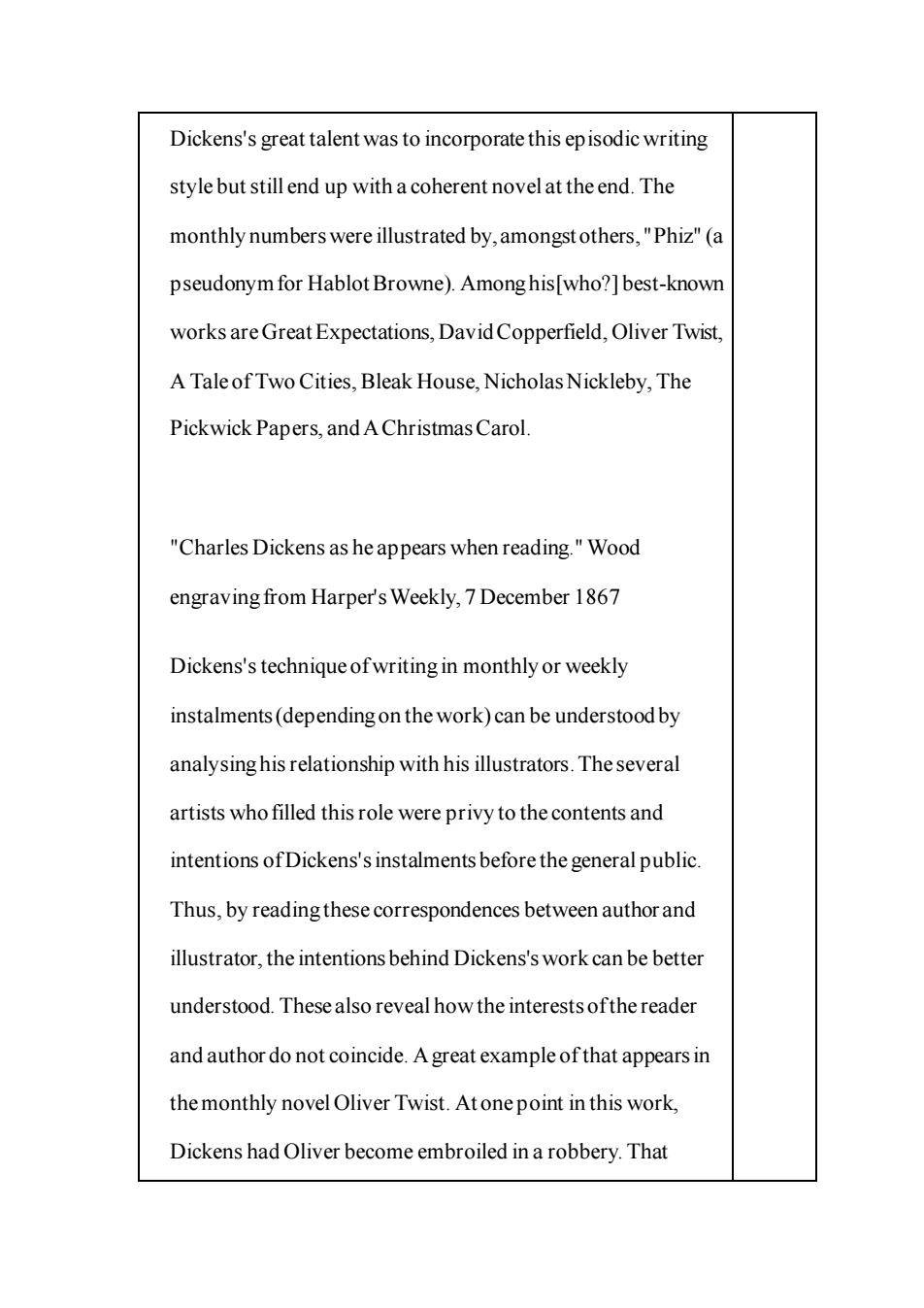正在加载图片...

Dickens's great talent was to incorporate this episodic writing style but still end up with a coherent novel at theend.The monthly numbers were illustrated by,amongstothers,"Phiz"(a pseudonym for Hablot Browne).Among his[who?]best-known works are Great Expectations,David Copperfield,Oliver Twist, A Tale of Two Cities,Bleak House,Nicholas Nickleby,The Pickwick Papers,and A Christmas Carol. "Charles Dickens as heappears when reading"Wood engraving from Harper's Weekly,7 December 1867 Dickens's technique of writing in monthly or weekly instalments(dependingon the work)can be understood by analysing his relationship with his illustrators.The several artists who filled this role were privy to the contents and intentions ofDickens's instalments before the general public Thus,by reading these correspondences between author and illustrator,the intentions behind Dickens's work can be better understood.These also reveal how the interests ofthe reader and author do not coincide.A great example of that appears in the monthly novel Oliver Twist.Atone point in this work, Dickens had Oliver become embroiled in a robbery.ThatDickens's great talent was to incorporate this episodic writing style but still end up with a coherent novel at the end. The monthly numbers were illustrated by, amongst others, "Phiz" (a pseudonym for Hablot Browne). Among his[who?] best-known works are Great Expectations, David Copperfield, Oliver Twist, A Tale of Two Cities, Bleak House, Nicholas Nickleby, The Pickwick Papers, and A Christmas Carol. "Charles Dickens as he appears when reading." Wood engraving from Harper's Weekly, 7 December 1867 Dickens's technique of writing in monthly or weekly instalments (depending on the work) can be understood by analysing his relationship with his illustrators. The several artists who filled this role were privy to the contents and intentions of Dickens's instalments before the general public. Thus, by reading these correspondences between author and illustrator, the intentions behind Dickens's work can be better understood. These also reveal how the interests of the reader and author do not coincide. A great example of that appears in the monthly novel Oliver Twist. At one point in this work, Dickens had Oliver become embroiled in a robbery. That